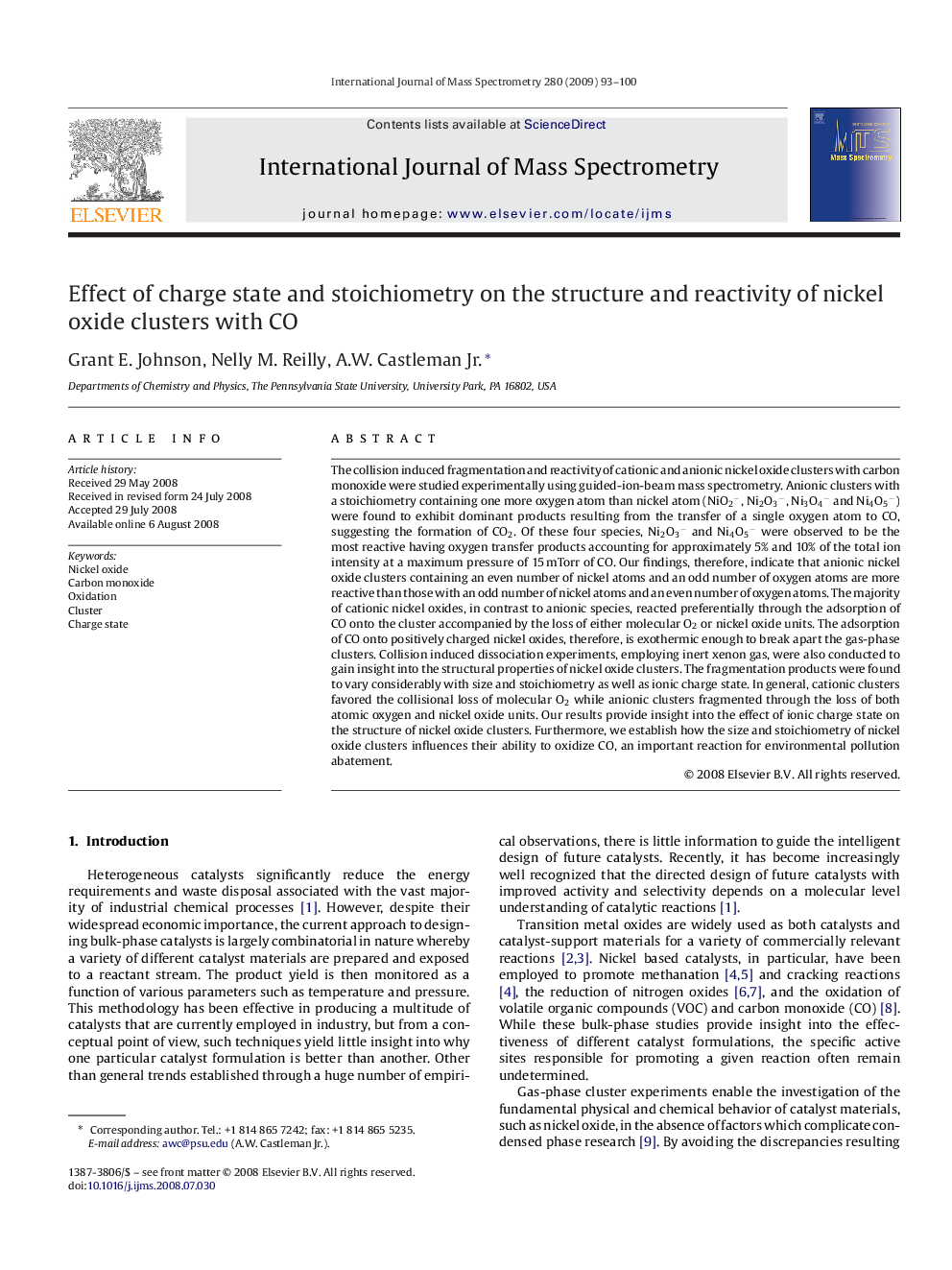| کد مقاله | کد نشریه | سال انتشار | مقاله انگلیسی | نسخه تمام متن |
|---|---|---|---|---|
| 1194811 | 1492346 | 2009 | 8 صفحه PDF | دانلود رایگان |

The collision induced fragmentation and reactivity of cationic and anionic nickel oxide clusters with carbon monoxide were studied experimentally using guided-ion-beam mass spectrometry. Anionic clusters with a stoichiometry containing one more oxygen atom than nickel atom (NiO2−, Ni2O3−, Ni3O4− and Ni4O5−) were found to exhibit dominant products resulting from the transfer of a single oxygen atom to CO, suggesting the formation of CO2. Of these four species, Ni2O3− and Ni4O5− were observed to be the most reactive having oxygen transfer products accounting for approximately 5% and 10% of the total ion intensity at a maximum pressure of 15 mTorr of CO. Our findings, therefore, indicate that anionic nickel oxide clusters containing an even number of nickel atoms and an odd number of oxygen atoms are more reactive than those with an odd number of nickel atoms and an even number of oxygen atoms. The majority of cationic nickel oxides, in contrast to anionic species, reacted preferentially through the adsorption of CO onto the cluster accompanied by the loss of either molecular O2 or nickel oxide units. The adsorption of CO onto positively charged nickel oxides, therefore, is exothermic enough to break apart the gas-phase clusters. Collision induced dissociation experiments, employing inert xenon gas, were also conducted to gain insight into the structural properties of nickel oxide clusters. The fragmentation products were found to vary considerably with size and stoichiometry as well as ionic charge state. In general, cationic clusters favored the collisional loss of molecular O2 while anionic clusters fragmented through the loss of both atomic oxygen and nickel oxide units. Our results provide insight into the effect of ionic charge state on the structure of nickel oxide clusters. Furthermore, we establish how the size and stoichiometry of nickel oxide clusters influences their ability to oxidize CO, an important reaction for environmental pollution abatement.
Journal: International Journal of Mass Spectrometry - Volume 280, Issues 1–3, 1 February 2009, Pages 93–100